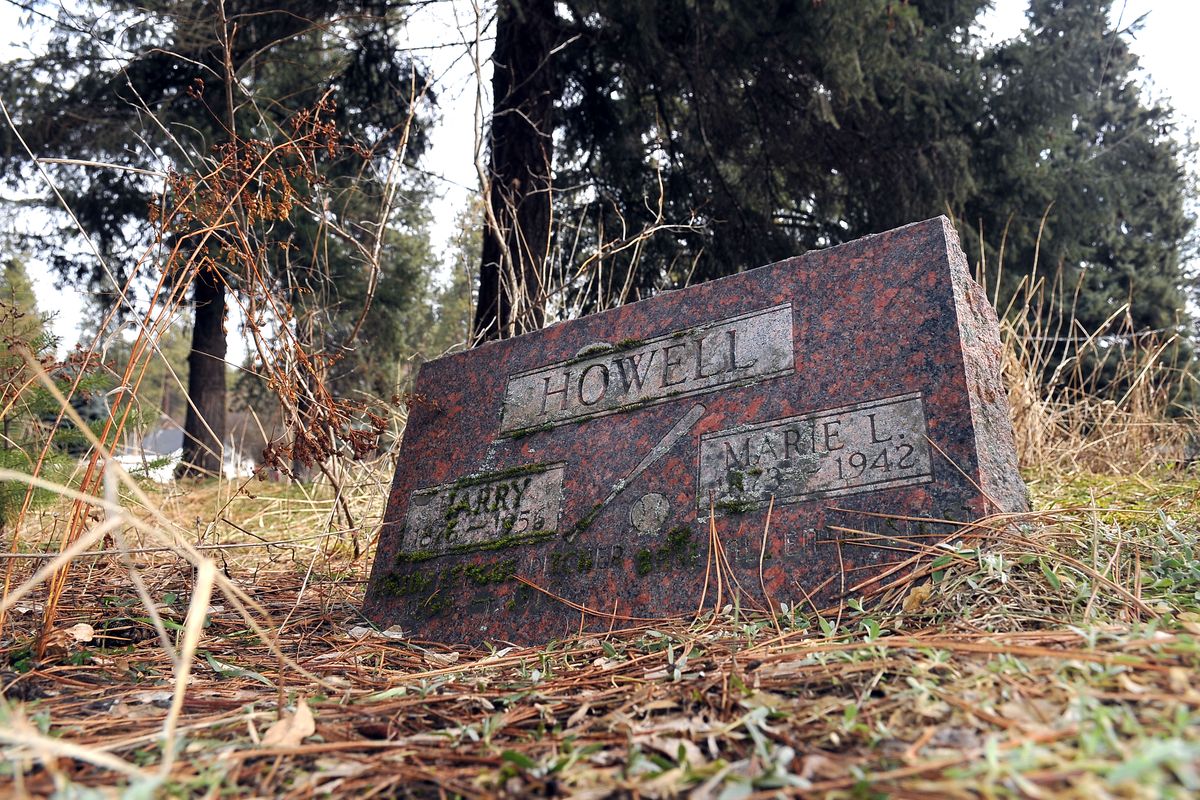Landmarks: Baseball’s ‘Handsome Harry’ is buried in Spokane

There’s one thing that baseball fans do better than just about anyone else. They keep statistics – and there’s a boatload of them available for Harry Howell, the man who threw one of the wettest spitballs in major league baseball history and who lies buried at Greenwood Memorial Terrace in Spokane.
The statistics themselves are interesting, but the life of Handsome Harry, as he was known, was even more, shall we say, colorful. And just how did this East Coast native, who never played ball west of St. Louis, come to live out his later years in the West?
A stocky 5-foot-8 right-hander, Howell was born in New Jersey in 1876, learning his craft on the sandlots of Brooklyn. He pitched for the Brooklyn Bridegrooms/Superbas in 1898 and 1900 (the team later became the Dodgers), the Baltimore Orioles in 1899, the New York Highlanders 1901-’03 (the team later became the Yankees) and the St. Louis Browns 1904-’10. He was considered the best pitcher during what was known as the Deadball Era, the first two decades of the 20th century, helping the Superbas win the 1900 National League Pennant.
He ranks 82nd on major league baseball’s all-time earned run average list (2.74), 87th on the all-time complete games list (244) and 68th on the hit batsman list (97). He remains Baltimore’s career ERA leader (2.06). He also played most infield and all outfield positions, with a .958 fielding percentage, and was a reasonably decent batter (.217 batting average).
According to Jim Price, a Spokane baseball historian, Howell’s spitball was famous as he used so much slippery elm that it appeared he was foaming at the mouth. One written report indicated that his own infielders complained about handling the ball when he pitched as it was usually covered in saliva.
Howell credited improvement in his pitching ability to taking singing lessons. He said his bad stomach turned on him by about the sixth inning, making him weaker and more vulnerable to batters. Singing lessons, he believed, strengthened his stomach and diaphragm muscles. He was quoted: “As I kept up my studies my ailment disappeared, my stomach was restored.” He expressed the desire to one day sing on stage.
Off the field he was known as a tough contract negotiator and was an occasional springtime holdout as he wrangled for a better salary. Always entertaining, he sometimes worked off-season as a vaudevillian in St. Louis. Also known as a ladies man, accounts show that his first wife Susie left him after finding a letter in his coat pocket from a Detroit woman asking why he hadn’t come to see her as promised.
In the spring of 1909 he injured his shoulder, and after surgery proved unsuccessful, he retired from the mound. It was 1910 that ended his affiliation with the American League entirely with his implication in the Ty Cobb-Napoleon Lajoie batting race during which it was alleged that Howell sought to influence an official scorer.
He went on to umpire in the Federal League until 1915, being let go after a set-to with a team manager. He umpired for a while in the Northwest League – which is no doubt how he wound up so far away from home – and by 1920 was living in a downtown boarding house in Seattle with his second wife Marie. He worked as a mining engineer, moving for reasons not known to Spokane where he was a bowling alley manager, hotel manager, plumber and truck driver.
Price said Howell became acquainted with Spokane businessman Bill Ulrich, and when Ulrich purchased the Spokane Hawks baseball team in 1939, renaming them the Indians, Howell became a trusted adviser. Together they created the Star Baseball card game and published a book, “Ulrich’s Baseball Manual: All Baseball Plays for the Young Players and Baseball Fans of America.” Howell said the book was a guide for the right ways to develop as a baseball player.
In 1956 Howell developed gangrene in one of his feet. After surgery at St. Luke’s Hospital, he died there of a heart attack on May 22, 1956. Marie, who died in 1942, lies next to him at Greenwood Memorial Terrace.
Handsome Harry Howell, said to be living on welfare at the time of his death, was a complicated and fascinating man – and a person whose story cannot be told through baseball statistics alone.